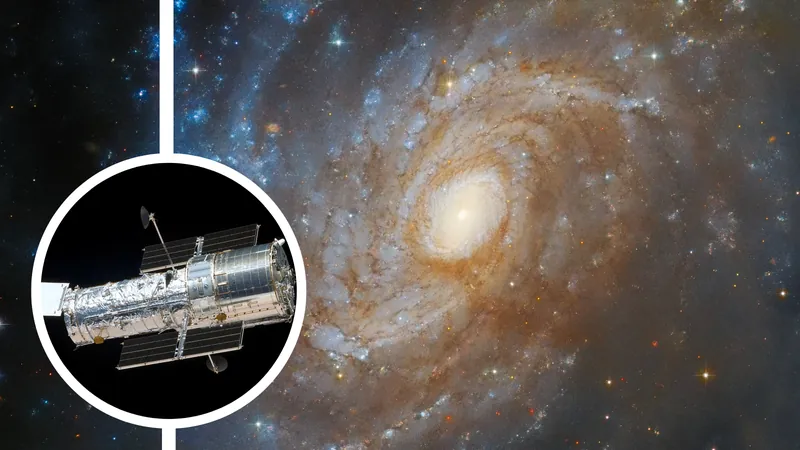
Hubble's 35-Year Legacy: Can It Still Compete with the Latest Space Telescopes?
2025-04-23
Author: Daniel
Celebrating 35 Years of Cosmic Exploration
This Thursday marks a monumental milestone: the Hubble Space Telescope celebrates an incredible 35 years of mission in the cosmos! Since its launch in 1990, Hubble has been a treasure trove of stunning visuals and invaluable scientific data. But at this age, one can't help but wonder—can Hubble continue to shine in the era of its high-tech successors?
Hubble Holds Its Own Against New Giants
Despite the introduction of cutting-edge instruments like the James Webb Space Telescope (JWST), experts assert that Hubble is still a powerhouse of astronomical research. Kurt Retherford, a scientist at the Southwest Research Institute, recently leveraged Hubble's capabilities to explore the intriguing volcanic world of Io, one of Jupiter's moons. "After 35 years, Hubble remains unique as a crucial tool for groundbreaking discovery," Retherford stated. The demand for Hubble observation time is still strikingly high, ensuring that only the best research ideas make the cut.
Comparison with the JWST: Two Different Worlds
Even with the arrival of the $10 billion JWST, Hubble's role is far from obsolete. The key lies in their differences: Hubble excels at capturing visible and ultraviolet light, while JWST specializes in infrared wavelengths. This complementary nature allows both telescopes to work hand-in-hand, especially in observing dynamic cosmic events that alter their wavelength signatures over time.
A Legacy of Discovery
Notably, Hubble recently played a critical role in a team study of around 80 dwarf galaxies, marking the first detection of star clusters colliding in these faint celestial bodies. Researcher Mélina Poulain from the University of Oulu highlighted that Hubble's field of view and its ability to see faint objects make it unparalleled for examining various astronomical phenomena, including elusive dwarf galaxies.
The Future: Collaboration Over Competition
Looking ahead, the future of Hubble is all about synergy. It is expected to work alongside both the JWST and upcoming ground-based telescopes, such as the Nancy Grace Roman Space Telescope, set to launch by May 2027. Each of these telescopes brings unique strengths to the table, meaning Hubble's contribution will remain vital in collaborative observatory projects.
Exciting Collaborations on the Horizon
The Vera Rubin Observatory in Chile, nearing completion, will provide broad surveys of the night sky, scanning multiple large fields simultaneously. This innovative approach will uncover countless cosmic gems, which Hubble and JWST can then observe in greater detail. Retherford believes the future holds exciting discoveries as Hubble coordinates with the upcoming missions to Jupiter's moons—promising a bright future for further explorations.
In Conclusion: Hubble's Enduring Legacy and Future Potential
As Hubble continues its mission among the stars, its legacy is clear. It remains an irreplaceable asset in the field of astronomy, delivering unique insights and stunning imagery. With future collaborations on the horizon, there's no telling what new wonders await as Hubble persists in revealing the secrets of our universe.

 Brasil (PT)
Brasil (PT)
 Canada (EN)
Canada (EN)
 Chile (ES)
Chile (ES)
 Česko (CS)
Česko (CS)
 대한민국 (KO)
대한민국 (KO)
 España (ES)
España (ES)
 France (FR)
France (FR)
 Hong Kong (EN)
Hong Kong (EN)
 Italia (IT)
Italia (IT)
 日本 (JA)
日本 (JA)
 Magyarország (HU)
Magyarország (HU)
 Norge (NO)
Norge (NO)
 Polska (PL)
Polska (PL)
 Schweiz (DE)
Schweiz (DE)
 Singapore (EN)
Singapore (EN)
 Sverige (SV)
Sverige (SV)
 Suomi (FI)
Suomi (FI)
 Türkiye (TR)
Türkiye (TR)
 الإمارات العربية المتحدة (AR)
الإمارات العربية المتحدة (AR)